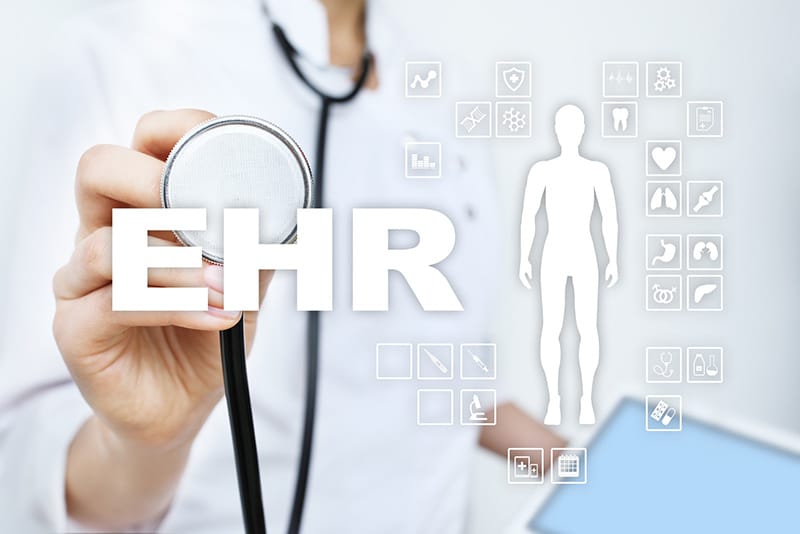
Electronic health record (EHR) adoption in the United States has reached a new high at 89%, according to a recent SelectHub report. However, even as EHR systems are constantly evolving, usability issues still persist. Surveys have found that lack of user-friendliness and documentation issues are major concerns for physicians. While medical transcription outsourcing helps physicians streamline EHR documentation, recent reports indicate that EHR usability issues are common during EHR implementation and optimization.
Key EHR Usability Problems
EHR usability problems are the main cause of patient harm, according to an article published in JAMA in 2020 (EHR Intelligence). Researchers from the Center for Clinical Informatics and Improvement at the University of California, San Francisco reported that about 40 percent of EHRs had an issue that could potentially lead to patient harm and about 786 hospitals and 37,365 individual providers may have used EHRs with potential safety issues based on required product use reporting.
Another study by researchers at The Ohio State University College of Medicine identified inappropriate EHR alerts, cognitive support matters, and objective encounters as key EHR usability concerns.
Problems attributed to poor system design, development and implementation included the following:
- Drug Dosing Errors – when a dose was entered, the EHR system removed the decimal point from the entry, which could lead to overdosing
- Extremely Cluttered Interface – a cluttered interface or a complex medication list could lead the physician to choose a wrong medication
- Lack of Consistency in Data Entry – a complex interface can result in added clicks and scrolls. Heavy interaction with the EHR can lead to click fatigue which increases the risks of errors and cause clinician frustration and burnout.
- Variation in EHR Usability Logic from User to User or Heterogeneity – Do EHRs present supporting the diagnostic reasoning process and the logical work flow that a specific user would want to undertake?
- Alert Fatigue – EHR alerts have been identified as one of the most common usability interferences. Too many or random alerts can affect both the physician’s and pharmacist’s workflow.
Expert Recommendations to Mitigate EHR Usability Issues
- EHR Reporting Program: The study recommends an EHR reporting program to promote EHR usability improvements. According to the researchers, a central reporting program can help clinicians and patients report potential safety issues when they are noticed. This will allow the issues to be analyzed and reported to the healthcare community. It was noted that any clauses that prevent clinicians from sharing screenshots and other information must the removed for this strategy to succeed.
- Proper Certification Testing: Another strategy to improve EHR usability issued is to ensure that certification testing is done properly. It must be ensured that rigorous testing is during the certification process to ensure optimal product design and development. Further, the EHR product that is being tested and certified should be the same as the one that is being implemented and used by frontline clinicians. Some very basic accreditation standards should be introduced to encourage hospitals to do some very basic safety testing, researchers noted.
- Improve Alert Systems: Experts recommend defining and improving the number of EHR alerts. It is necessary to remove alerts that do not make clinical sense and improve the ones that are not appropriate. Chief medical information officer at BayCare Health System, Florida, Alan Weiss, MD, and his team analyzed the signals, added more intelligence to alerts, and made them active (EHR Intelligence). He says that it is important to take steps to see that alerts do not trouble users. Alerts need to help users take action to improve quality, safety, and responsiveness to patients.
- Quality EHR Training: EHR usability problems are associated with EHR optimization and the evolution of technology. An effective EHR training program is essential for users, especially for providers who are new to the technology. Proper EHR training can improve EHR usability and reduce chances of clinician burden and increase satisfaction. Experts recommend including EHR informatics in a training program so that users can understand EHR design and technology.
Over the past decade, EHRs have evolved into a critical element in the healthcare delivery system and will continue to progress in the coming years to improve the medical decision-making process and ease the tech burden on healthcare providers. With telemedicine rising in importance during the pandemic, providers and patients can initiate virtual visits via the EHR. Major improvements that EHR companies are planning in 2021 and beyond (www.beckershospitalreview.com) include: incorporation of natural language processing and voice assistants; fully connected, mobile EHR; enhancing the ability to access and exchange data regardless of its origin; inclusion of apps and technologies; cloud-based initiatives, and advanced artificial intelligence.
The quality of patient records is a critical focus for patient safety and improved patient outcomes. Partnering with an experienced medical transcription company is an ideal option to ensure accurate and timely documentation of patients’ conditions.


